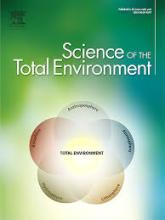Publications

|
Gufran Beig co-authored Professor, Energy, Environment and Climate Change Programme Understanding the influence of Summer Biomass Burning on Air Quality in North India: Eight Cities Field Campaign Study https://www.sciencedirect.com/science/article/abs/pii/S0048969722074630?via%3Dihub= Co-authored with R Khaiwal, T Singh, V Singh, S Chintalapati, and S Mor. Science of the Total Environment, Vol. 861 Near real-time monitoring of major air pollutants, i.e., particulate matter (PM10, PM2.5, PM1), trace gases (O3, CO, NO, NO2, NOx, NH3, CO2, SO2) and Volatile Organic Compounds (VOCs: benzene, ethylbenzene, m-, p-xylene, o-xylene and toluene) along with climatological parameters was done in eight-cities field campaigns during the rabi (wheat) crop residue burning period in the northwest of Indo-Gangetic Plain (IGP) region. This multi-city study observed that semi-urban regions have the most compromised air quality during the rabi crop residue burning and need attention to address the air quality issues in the IGP region. |

|
Anindya Sinha co-authored Professor, Animal Behaviour and Cognition Programme Blowing the lid off! Bottle-directed, extractive foraging strategies in synurbic bonnet macaques Macaca radiata in southern India Co-authored with Arijit Pal, Jean-Baptiste Leca. Frontiers in Psychology, Vol. 13, Nonhuman individuals and groups, living in anthropogenic landscapes, often adopt adaptive foraging strategies, mediated by their day-to-day interactions with humans and their artefacts. In this study, employing field experiments, we investigated an example of human-induced, extractive foraging behavior – the extraction of liquid contents from plastic bottles – in a synurbic bonnet macaque Macaca radiata population. The main aims of the study were to examine the distribution, diversity, inter-individual variability and intra-individual flexibility of bottle-directed manipulative behaviors, and to explore the social and environmental factors driving this behavioral practice. |
| Arijit Pal co-authored Research Associate, Animal Behaviour and Cognition Programme Blowing the lid off! Bottle-directed, extractive foraging strategies in synurbic bonnet macaques Macaca radiata in southern India https://www.frontiersin.org/articles/10.3389/fpsyg.2022.973566/full?utm_source=Email_to_authors_&utm_medium=Email&utm_content=T1_11.5e1_author&utm_ca… Co-authored with Jean-Baptiste Leca, Anindya Sinha. Frontiers in Psychology, Vol. 13 Nonhuman individuals and groups, living in anthropogenic landscapes, often adopt adaptive foraging strategies, mediated by their day-to-day interactions with humans and their artefacts. In this study, employing field experiments, we investigated an example of human-induced, extractive foraging behavior – the extraction of liquid contents from plastic bottles – in a synurbic bonnet macaque Macaca radiata population. The main aims of the study were to examine the distribution, diversity, inter-individual variability and intra-individual flexibility of bottle-directed manipulative behaviors, and to explore the social and environmental factors driving this behavioral practice. |
|

|
M Sai Baba Visiting Professor, School of Natural Sciences and Engineering World Computer Literacy Day https://res.us2.list-manage.com/track/click?u=4c96385cee36c21eb5f2510c4&id=6fb88106e9&e=ffe444b6f3 Scicom@NIAS Computer literacy is as critical as being literate. World Computer Literacy Day is observed every year on 02 December, to celebrate the role played by computers in society and their importance in today's world. The focus is to encourage the development of IT skills, particularly among children. Bridging the gap between the technologically backward and technologically developed nations is the need of the present. |

|
Rudrodip Majumdar co-authored Assistant Professor, Heritage Science and Society Programme Improved Geospatial Analysis of Shoreline Modification Using a Weighted-Average based Novel Formulation https://onlinelibrary.wiley.com/doi/abs/10.1002/esp.5522 Co-authored with Asmita Mohanty, MB Rajani and Shailesh Nayak. Earth Surface Processes and Landforms This study presents a novel weighted-average method (WAM) that captures the detailed nuances of shoreline change patterns over long and short periods by considering shorelines belonging to five different time frames. Using the WAM, the average shoreline modification for the longer period (136 years with intervals of ~ 34 years) and for the shorter period (annual changes over a period of 5 years) have been calculated for the 9 km stretch of the Kollam coast in Kerala, India. |

|
Gufran Beig co-authored Professor, Energy, Environment and Climate Change Programme Air quality and health co-benefits of climate change mitigation and adaptation actions by 2030: an interdisciplinary modeling study in Ahmedabad https://iopscience.iop.org/article/10.1088/2752-5309/aca7d8 Co-authored. Environmental Research: Health, 2022 Air quality and health co-benefits of climate change mitigation and adaptation actions by 2030: An interdisciplinary modelling study in Ahmedabad, India |

|
C P Rajendran Adjunct Faculty, School of Natural Sciences and Engineering The Cosmological Mysteries https://newspaper.mathrubhumi.com/features/edit-page/edit-page-1.8093262?fbclid=IwAR0VGB9iMfRWW5Qhe9JaVYfO7XXV-noEwdrHum7-bCvxJgZFPzZ9jAyPCBM Mathrubhumi Science grapples with some of the difficult questions in the quantum physics. |
| |
R Srikanth Professor, Energy, Environment and Climate Change Programme Role of Coal in India’s Energy Transition https://cms.nias.res.in/publications/role-of-coal-in-indias-energy-transition Research Report No. NIAS/NSE/EECP/U/RR/30/2022 Coal-based power generation in the EU will increase for the second consecutive year in 2022 after recording an increase of 20% in 2021 while natural gas production in the U.S. during 2022 has reached an all-time high of 2.7 billion cubic meters per day. India depends on coal for 72% of its electricity generation and it is critical for the country to expedite medium-term and long-term strategies to ensure the sustainability of India’s coal & power sectors without hampering our energy security and human development. These strategies are explained in this report. |
